您好,登錄后才能下訂單哦!
您好,登錄后才能下訂單哦!
這篇文章將為大家詳細講解有關如何寫個設置命令的VBS腳本代碼,小編覺得挺實用的,因此分享給大家做個參考,希望大家閱讀完這篇文章后可以有所收獲。
代碼如下:
'將以下代碼復制并保存為"系統命令.VBS",并運行安裝。
'安裝成功后,可通過在程序、文件或文件夾上點右鍵->發送到->系統命令來設置一個命令,然后在運行中就可以輸入該命令打開文件了。
'腳本運行一次后在右鍵菜單中增加從這里運行CMD的快捷方式,還增加查找目標文件快捷方式
'On Error Resume Next
If (lcase(right(wscript.fullname,11))<>"wscript.exe") then
set objShell=createObject("wscript.shell")
objShell.Run("Wscript //nologo "&chr(34)&wscript.scriptfullname&chr(34))
Wscript.Quit
end if
Set pCmd=CreateObject("WScript.Shell")
Set pFso=CreateObject("Scripting.FileSystemObject")
Set pShell = CreateObject("Shell.Application")
Set pSysEnv = CreateObject("WScript.Shell").Environment("system")
strComputer = "."
Set pWMIService = GetObject("winmgmts:\\" & strComputer & "\root\cimv2")
Function LGetPath(pFile)
iLastSepPos = InstrRev(pFile, "\", -1, 1)
If iLastSepPos <= 0 Then
LGetPath=""
Exit Function
Else
LGetPath = Left(pFile, iLastSepPos-1)
End If
End Function
Function GetLnkTarget(linkPath)
linkPath=Replace(linkPath, "\", "\\")
Set pFiles = pWMIService.ExecQuery("Select * From Win32_ShortcutFile WHERE Name = " & "'" & linkPath & "'")
For Each pFile in pFiles
GetLnkTarget=pFile.Target
Exit For
Next
End Function
Function ListSysCmd(pFileName)
SysCmdPath=pCmd.RegRead("HKCU\Software\Microsoft\Windows\CurrentVersion\Explorer\Shell Folders\SysCmd")
Set pFolder = pFso.GetFolder(SysCmdPath)
Set pFile = pFso.OpenTextFile(pFileName, 2, True)
For Each file in pFolder.Files
linkPath=SysCmdPath & "\" & file.name
IF UCASE(Right(file.name, 4))=".LNK" Then
Set lnkFiles = pWMIService.ExecQuery("Select * From Win32_ShortcutFile WHERE Name = " & "'" & Replace(linkPath, "\", "\\") & "'")
For Each lnkFile in lnkFiles
pFile.WriteLine(linkPath & " " & lnkFile.Target)
Next
Else
pFile.WriteLine linkPath
End IF
Next
End Function
Function GetConfigPath
Set pFolder = pShell.BrowseForFolder(0, "請選擇一個目錄:", 0, "::{20D04FE0-3AEA-1069-A2D8-08002B30309D}")
If pFolder Is Nothing Then
Wscript.Quit
End If
Set pFolderItem = pFolder.Self
GetConfigPath = pFolderItem.Path
End Function
Sub SetEnv(pPath, pValue)
If pValue="" Then
pSysEnv.Remove(pPath)
Else
pSysEnv(pPath) = pValue
End IF
End Sub
Function GetEnv(pPath)
GetEnv = pSysEnv(pPath)
End Function
'判斷一個字符串是否匹配一個正則表達式
' ^\w+[@]\w+[.]\w+$ E-Mail地址
' ^[0-9-]+$ 數字
Function IsMatch(Str, Patrn)
Set r = new RegExp
r.Pattern = Patrn
IsMatch = r.test(Str)
End Function
Sub AddNewCmd(pShortCutName, pTargetPath, pCmdLocation)
IF pShortCutName<>"" Then
LinkDir = pCmdLocation
Set pCmdLink = pCmd.CreateShortcut(LinkDir & "\" & pShortCutName & ".lnk")
pCmdLink.TargetPath = pTargetPath
pCmdLink.WindowStyle = 1
pCmdLink.Hotkey = ""
pCmdLink.IconLocation = "%systemroot%\system32\shell32.dll,146"
pCmdLink.Description = "Shortcut Created At " & Date() & " " & Time()
pCmdLink.WorkingDirectory = LGetPath(pTargetPath)
pCmdLink.Save
End IF
End Sub
Set pArgs=Wscript.Arguments
If pArgs.Count = 0 Then '無參運行,復制自身到SendTo文件夾。
MsgBox "注意無參運行即執行安裝過程!" & VBCRLF & _
"安裝過程包括以下操作:" & VBCRLF & VBCRLF & _
"1、在發送到目錄中建立該腳本的快捷方式;" & VBCRLF & _
"2、完成安裝后可通過發送到建立快捷方式;" & VBCRLF & _
"3、所有快捷命令可通過運行(WIN+R)執行。" & VBCRLF
SysCmdPath = GetConfigPath
If SysCmdPath = "" Then WScript.Quit()
pCmd.RegWrite "HKCU\Software\Microsoft\Windows\CurrentVersion\Explorer\Shell Folders\SysCmd", SysCmdPath, "REG_SZ"
'Path = pCmd.RegRead("HKEY_LOCAL_MACHINE\SYSTEM\ControlSet001\Control\Session Manager\Environment\Path")
Path = GetEnv("Path")
If Right(SysCmdPath, 1)="\" Then SysCmdPath = Left(SysCmdPath, Len(SysCmdPath)-1)
SysCmdPathPattern ="(;)?(" & Replace(SysCmdPath, "\", "\\") & ")(\\)?(;|$)"
If Not IsMatch(Path, SysCmdPathPattern) Then
Path = Path & ";" & SysCmdPath
SetEnv "Path", Path
End If
thisFile = WScript.ScriptFullName
IF thisFile<>SysCmdPath & "\" & WScript.ScriptName Then
pFso.CopyFile thisFile, SysCmdPath & "\"
thisFile = SysCmdPath & "\" & WScript.ScriptName
End IF
AddNewCmd "N系統命令", thisFile, pCmd.RegRead("HKCU\Software\Microsoft\Windows\CurrentVersion\Explorer\Shell Folders\SendTo")
'在右鍵菜單中增加創建當前文件或文件夾的系統快捷命令的菜單項
pCmd.RegWrite "HKEY_CLASSES_ROOT\*\shell\G創建系統命令\command\", "WScript.exe " & thisFile & " ""%1""", "REG_SZ"
pCmd.RegWrite "HKEY_CLASSES_ROOT\Directory\shell\G創建系統命令\command\", "WScript.exe " & thisFile & " ""%1""", "REG_SZ"
'在右鍵菜單中增加在當前路徑打開CMD窗口命令的菜單項
pCmd.RegWrite "HKEY_CLASSES_ROOT\*\shell\Q在此打開CMD\command\", "CMD /K PUSHD ""%1\\..""", "REG_SZ"
pCmd.RegWrite "HKEY_CLASSES_ROOT\Directory\shell\Q在此打開CMD\command\", "CMD /K PUSHD ""%1""", "REG_SZ"
'在右鍵菜單中增加在查找快捷方式位置的菜單項
pCmd.RegWrite "HKEY_CLASSES_ROOT\*\shell\W查找目標位置\command\", "WScript.exe " & thisFile & " S ""%1""", "REG_SZ"
pCmd.RegWrite "HKEY_CLASSES_ROOT\Directory\shell\W查找目標位置\command\", "WScript.exe " & thisFile & " S ""%1""", "REG_SZ"
AddNewCmd "Q", pCmd.RegRead("HKCU\Software\Microsoft\Windows\CurrentVersion\Explorer\Shell Folders\SysCmd"), pCmd.RegRead("HKCU\Software\Microsoft\Windows\CurrentVersion\Explorer\Shell Folders\SysCmd")
AddNewCmd "QC", thisFile, pCmd.RegRead("HKCU\Software\Microsoft\Windows\CurrentVersion\Explorer\Shell Folders\SysCmd")
MsgBox "安裝成功!"
ElseIf pArgs.Count = 1 Then
IF UCase(pArgs(0))="EDIT" Then '只有一個參數且為Edit時, 打開此腳本進行編輯。
pCmd.Run("Notepad.exe " & WScript.ScriptFullName)
WScript.Quit()
ElseIF UCase(pArgs(0))="LIST" Then '只有一個參數且為List時, 列出所有已經建立的快捷方式和其對應的目標文件。
ResultFile=pCmd.RegRead("HKCU\Software\Microsoft\Windows\CurrentVersion\Explorer\Shell Folders\SysCmd") & "\ListSysCmd.txt"
ListSysCmd ResultFile
pCmd.Run("Notepad.exe " & ResultFile)
WScript.Quit()
Else '只有一個參數時, 默認處理方式是建立傳入的文件路徑的快捷方式。
pShortCutName=InputBox("請輸入該快捷方式的名字:", "創建快捷命令...", "")
IF pShortCutName="" Then WScript.Quit()
AddNewCmd pShortCutName, pArgs(0), pCmd.RegRead("HKCU\Software\Microsoft\Windows\CurrentVersion\Explorer\Shell Folders\SysCmd")
End IF
ElseIf pArgs.Count = 2 Then
IF UCase(pArgs(0))="S" Then '查找快捷方式目標文件位置
'判斷是否包括\,從右鍵菜單執行會直接傳遞目標地址,從快捷方式中需要組合快捷方式的地址。
IF Instr(pArgs(1), "\") > 0 And Instr(pArgs(1), ".lnk") = 0 Then '從右鍵菜單執行
pCmd.Run("Explorer.exe /select, " & pArgs(1))
Else '從命令行執行
IF Instr(pArgs(1), "\") > 0 Then '全路徑.lnk路徑
linkPath=pArgs(1)
Else
linkPath=pCmd.RegRead("HKCU\Software\Microsoft\Windows\CurrentVersion\Explorer\Shell Folders\SysCmd") & "\" & pArgs(1) & ".lnk"
End IF
linkPath=Replace(linkPath, "\", "\\")
Set pFiles = pWMIService.ExecQuery("Select * From Win32_ShortcutFile WHERE Name = " & "'" & linkPath & "'")
For Each pFile in pFiles
pCmd.Run("Explorer.exe /n, /select, " & pFile.Target)
Next
End IF
Else
'FileLocation, ShortCutName
pShortCutName=pArgs(1)
AddNewCmd pShortCutName, pArgs(0), pCmd.RegRead("HKCU\Software\Microsoft\Windows\CurrentVersion\Explorer\Shell Folders\SysCmd")
End IF
End If
復制好腳本存為Syscmd.vbs或其它名稱,就可以雙擊安裝了,安裝過程很簡單,只有以下幾步.
1.雙擊開始安裝

2.選擇安裝目錄
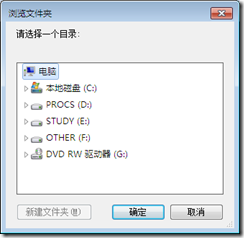
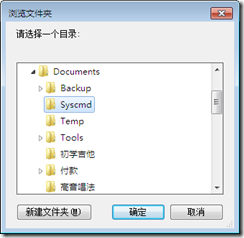
3.安裝成功
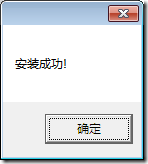
現在再來查看一下右鍵菜單
1. 創建快捷命令功能
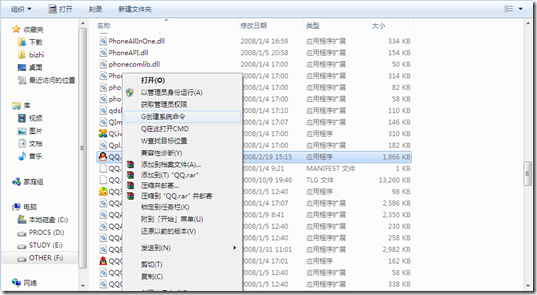
在你要創建快捷命令的exe程序或任何其它文件上點右鍵,然后選擇快捷菜單中的"G創建系統命令",或者直接按字母G,彈出以下對話框:
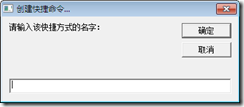
直接輸入快捷命令,如QQ,快捷命令QQ就創建成功了.
然后想啟動QQ時直接WIN+R打開運行窗口,并輸入QQ回車,QQ程序啟動就這么簡單
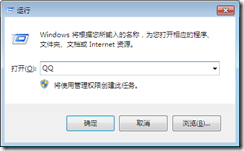
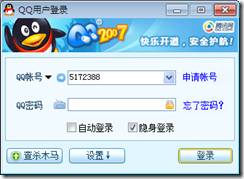
2.在這里打開CMD功能
在任何文件或文件夾上點右鍵,然后選擇"Q在此打開CMD"或者直接按Q,就會以此目錄為工作目錄打開CMD窗口
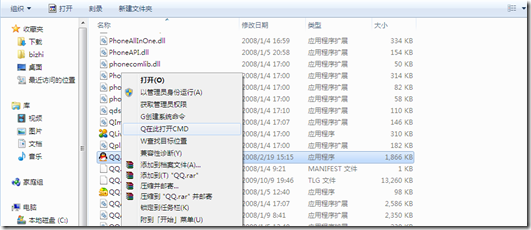
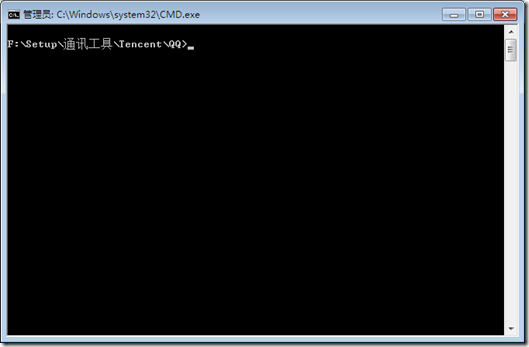
3.查找目標位置功能
對于Windows快捷方式,經常遇到想要查找其它文件位置的情況,一般都是點右鍵然后查屬性,查點查找文件找到,現在任何文件或文件夾上點右鍵都會有如下菜單,選擇"W查找目標位置"或直接按W,可以查找到快捷方式的目標文件或文件夾位置,也可以查找到桌面上程序的目錄位置.
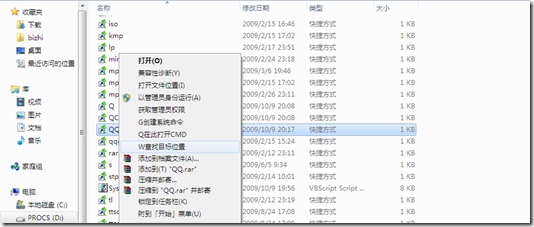
直接定位文件所在目錄并打開:
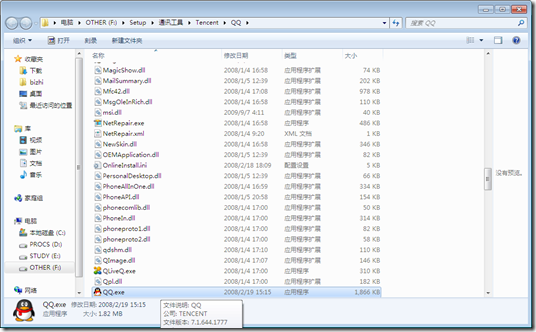
關于“如何寫個設置命令的VBS腳本代碼”這篇文章就分享到這里了,希望以上內容可以對大家有一定的幫助,使各位可以學到更多知識,如果覺得文章不錯,請把它分享出去讓更多的人看到。
免責聲明:本站發布的內容(圖片、視頻和文字)以原創、轉載和分享為主,文章觀點不代表本網站立場,如果涉及侵權請聯系站長郵箱:is@yisu.com進行舉報,并提供相關證據,一經查實,將立刻刪除涉嫌侵權內容。